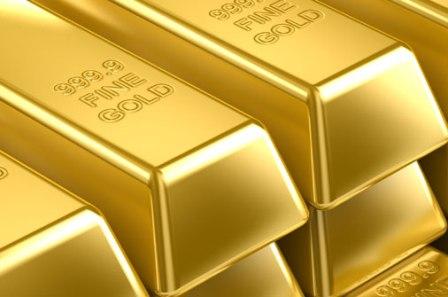
Spot market gold bullion fell to one-week lows below $1570 per ounce Friday morning, on course for a third straight weekly loss, having ended February down 5.9% as gold exchange traded funds saw their biggest calendar month bullion outflows on record.
“ETFs will probably contribute negatively to investment demand for the first time in eight quarters,” says today’s Commerzbank commodities note. “It is nonetheless too early to proclaim the end of the twelve-year bull market for gold. The ultra-loose monetary policy of major central banks, negative real interest rates and gold purchases by the central banks of emerging economies continue to suggest that gold prices will rise.”
Silver meantime fell to just above $28 an ounce this morning, while stocks and commodities also ticked lower as the US Dollar gained.
Over in India, traditionally the world’s biggest gold buying nation, the government’s annual budget unveiled Thursday included the introduction of inflation-linked bonds as part of an effort to encourage people to invest in alternatives to gold.
“The household sector must be incentivized to save in financial instruments rather than buy gold,” said finance minister P. Chidambaram.
India’s authorities have expressed official concern about the impact of gold imports on the country’s trade deficit, with the government raising the import duty on gold to 6% last month.
“We are happy with the budget,” said All India Gems & Jewellery Trade Federation chairman Bachhraj Bamalwa. “We were expecting something wrong to happen in the form of another hike in import or excise duty. Today is the first day after the budget, we are not expecting great sales in March due to the fiscal year end, but April sales should increase due to weddings.”
Elsewhere in Asia, “[gold] demand from jewelers has recovered a little [with] prices below $1600,” says Heraeus Metals general manager Dick Poon in Hong Kong, “though investors are either selling or sitting on the sidelines.”
Growth in China’s manufacturing sector slowed a little last month, according to both the official purchasing managers index and the one produced by HSBC which were published Friday.
Over in Europe, Germany’s manufacturing PMI rose back above 50, indicating the sector returned to expansion, while for the Eurozone as a whole the PMI held steady at 47.9, slightly better than analysts’ consensus forecast. The Eurozone unemployment rate however rose to a record high 11.9% in January, data published Friday show.
“All the data is supporting a [European Central Bank interest] rate cut, which we see in the second quarter,” says Standard Chartered economist Sarah Hewin.
Britain’s manufacturing sector meantime fell back into contraction last month, PMI data published Friday show.
“Clearly the data are weak,” says ING economist James Knightley, “and with [Wednesday’s] GDP report showing little sign of rebalancing in the UK economy, the Bank of England has more work to do.”
BoE deputy governor Paul Tucker confirmed earlier this week that the Monetary Policy Committee has discussed the possibility of introducing negative interest rates.
The Pound fell sharply against the Dollar this morning following the release of the PMI data, hitting its lowest level since July 2010 at just above $1.50. Gold in Sterling meantime recovered earlier losses as the Pound fell to trade around £1045 per ounce by the end of Friday morning.
The average Sterling gold price in February was £1051.35 an ounce, slightly up on the previous month, in contrast with the average Dollar gold price which fell 2.6%.
In the US, President Obama is due to meet with congressional leaders later today, as $85 billion of defense and welfare spending cuts known as the sequester begin today.
“We do not think the US sequester…will change [gold market] sentiment one way or the other,” says Ed Meir, metals analyst at brokerage INTL FCStone. “The $85 billion in spending cuts is simply too small to make much of a difference to the economy and although it could cause some problems, it will have no bearing on influencing investor allocations among different asset classes… [but] we suspect that we will see more price erosion heading into next week given gold’s poor fundamental and technical backdrop.”



 Follow us on Twitter
Follow us on Twitter Become our facebook fan
Become our facebook fan











Comments are closed.